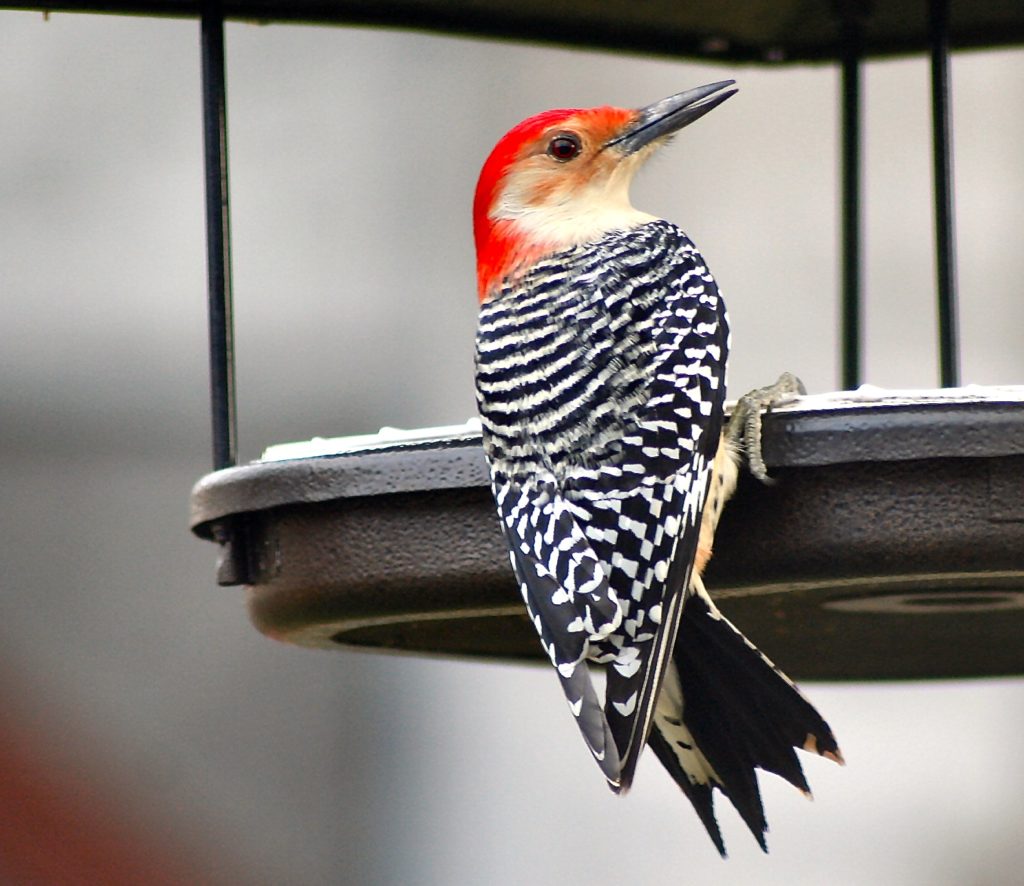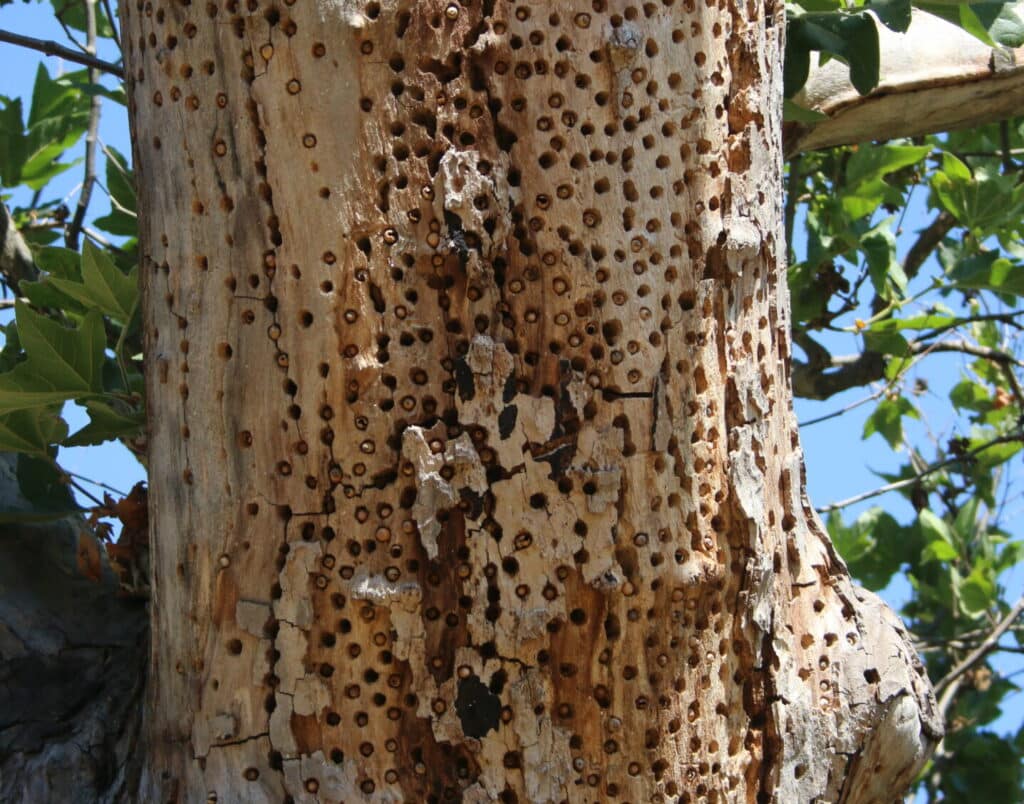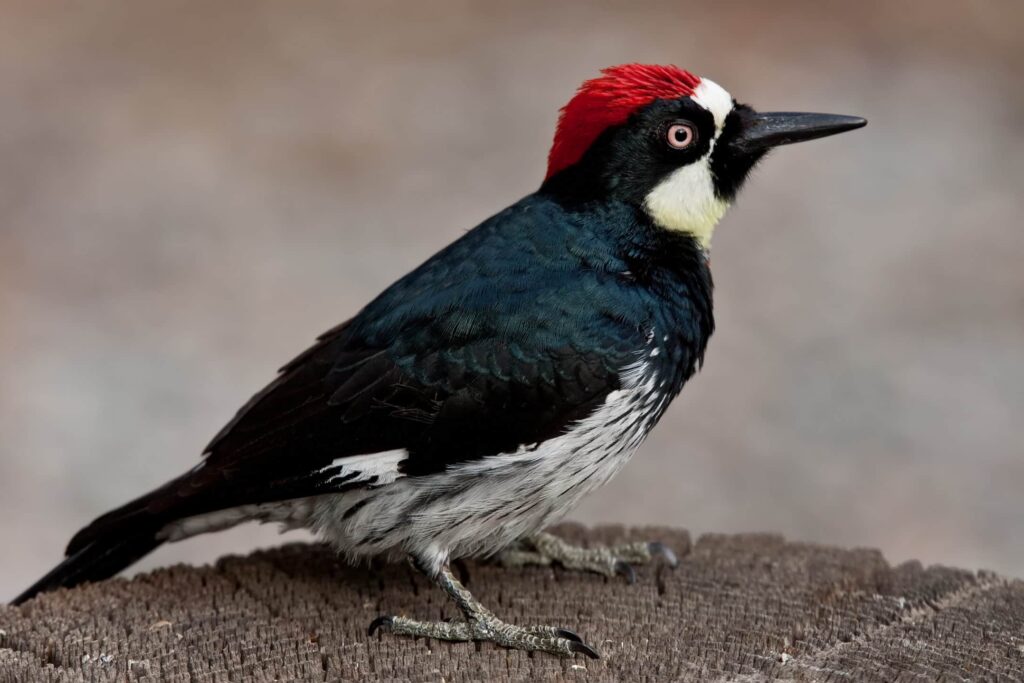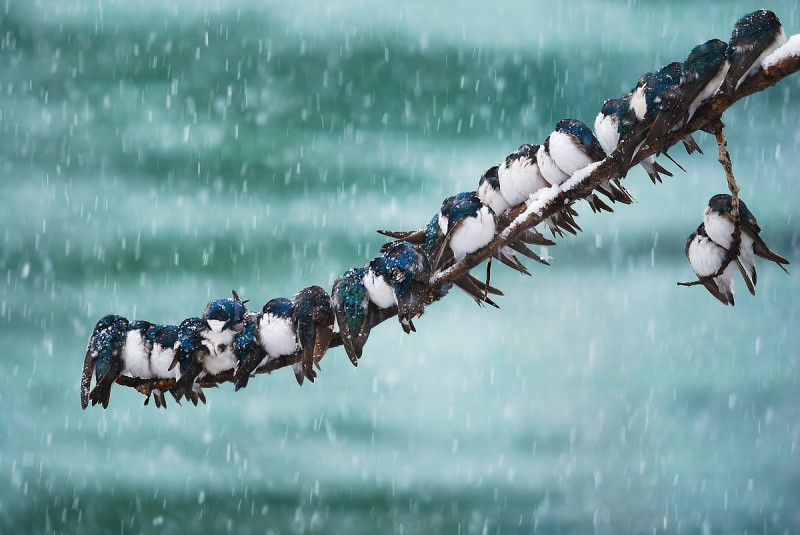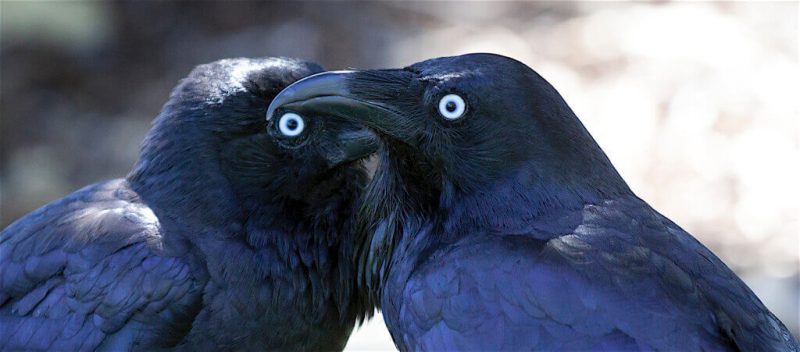Three of the most striking woodpecker species in the United States are noted for storing their food and protecting their stash.
RED-HEADED WOODPECKERS
Red-headed Woodpeckers, Melanerpes erythrocephalus, store and protect leftover food in tree crevices and are the only woodpeckers that cover it up (usually with bits of wood). Their main foods are acorns and beechnuts. But they also hammer into wood with their beaks to find insects, forage for them on the ground, and catch them in mid-air. Some insects, especially grasshoppers, are stored alive in crevices so tight they can’t escape. Uncommon at feeders in the summer, they will sometimes visit them in the winter, especially for suet.
They fiercely defend their territory and use bobbing or bowing displays to express aggression. They’re also known to remove or puncture eggs of other bird species and destroy nests.
Red-headed Woodpeckers are birds of pine and other open forests, tree rows, standing timber swamps, and other wetlands in the eastern two-thirds of the U.S. and southern Canada. Those living in more northern and western parts of their range migrate short distances south in the winter. Their population has declined dramatically in the past fifty years due to habitat loss and changes to their food supply.
RED-BELLIED WOODPECKERS
Red-bellied Woodpeckers, Melanerpes carolinus, are named for a faintly red chest that’s barely noticeable. What catches the eye is the rest of their body: an orangish-red head and black-and-white striped back. Like Red-headed Woodpeckers, they typically store food in tree cracks, but will also use fenceposts. Unlike many others, they forage primarily on the ground rather than in trees or flight and will even dig with their beaks to find arthropods. They also include fruits, nuts, and seeds in their diet.
Red-bellied Woodpeckers are non-migratory inhabitants of humid pine or mixed forests. They’re the most abundant species in the southeastern U.S. and less common in the northern half of their range. Comfortable in urban settings with suitable woodlands, they’ll visit feeders for suet, peanuts, and sometimes sunflower seeds.
Their population has grown in recent years because they’ve been adaptable to different types of forests and environments, which some birds aren’t able to do. If you have large dead trees in your yard, they might excavate a large nest hole or a smaller one for roosting. You might hear them “drumming” with their long, sharp beak on hollow trees, guttering, and metal roofs. They aggressively defend their nests from flying squirrels and others.1
ACORN WOODPECKERS
You can tell by their name what Acorn Woodpeckers, Melanerpes formicivorus, like to eat. In fact, they like acorns so much that they store them in trees. Called a granary, a single tree may hold up to 50,000 acorns, each fitting tightly into a hole. The woodpeckers move the nuts to smaller holes as they dry and shrink. It’s a full-time job! Not only that, but the acorns are visible and must be defended from Scrub Jays and others, so there’s always a woodpecker standing guard. The birds may also use other places that suit them, such as crevices and cracks in buildings and telephone poles.
Although acorns are their main dish, the birds eat other things, too: sap, fruit, nectar, lizards, and other small animals, especially insects, which they sometimes store in cracks for eating later. They’ll visit bird feeders for nuts, seeds, and suet. If they find your wood siding to their liking and start making holes in it, they can be hard to discourage.
Common inhabitants of oak and mixed-oak forests on slopes and mountains of the southwestern and western U.S. and south to Colombia, they rarely migrate except in areas with large seasonal fluctuations of insect populations. They’re highly social and live year-round in groups. Their population seems stable for now, but they’re threatened with habitat loss and degradation. All about birds
1 Kyle Chin, “The Great Woodpecker vs. Squirrel War, ” Red-headed Woodpecker Research and Recovery Project, September 29, 2021, https://bit.ly/46QlNzG.
More reading:
Birds are choosy – here’s where to place their birdhouses
Impact of habitat destruction on wildlife



